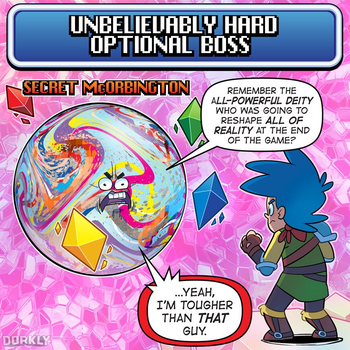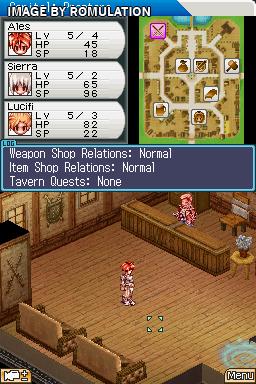
Sekiro Bosses are special, powerful that do not respawn. Bosses are encountered throughout the game and feature special movesets, increased health, and unique mechanics. Some bosses may be optional, whilst others must be defeated to continue through the game. Most Bosses have several red markers next to their bar which must be removed before the Boss can be killed, each of which requires a; a Boss' Vitality and Posture is fully restored in between Deathblows, and some Bosses can gain additional moves or abilities as each Deathblow marker is removed. Immediately after the final Deathblow marker is removed, a Boss must be finished off with a special Finisher Deathblow, which is performed like a regular Deathblow but involves Sekiro performing a special finisher animation unique to each boss. Boss DeathblowsThe only way to remove these Deathblow markers is by completely depleting the or of said Boss and then performing a deathblow.
Hunter blitzer type equips level and shit (Revo-Classic players, you might want to see this guide) Introduction Blitzers are hunters that emphasize the use of th. VIT/SPEAR KNIGHT GUIDE, level equips and shit. The primary airship of Final Fantasy VIII, the 'Super-High-Mobility-Flying-Ship' Ragnarok, is the fastest vehicle controllable by the party. It is capable of autopilot flight, as the player can choose a location from the largest map view while on the world map and the ship will fly there.
If someone was able to determine and add the level of vitality and posture (and also the posture regen speed) of each boss, it would be great. As a newbie or also as a veteran, it would be interesting. It would help to determine if you should target preferentially their HP or their posture. Clearly, Genichiro has a relative low posture, even in NG+7, so you can target his posture right from the start. Conversely, Demon of hatred or the Owl have massive posture and I Always kill them by decrerasing their vitality. Then you have some 'balance' bosses, like Isshin, I experience that I HAVE TO first decrease his vitality and then it becomes possible to kill him by Breaking his posture, so you need a complete strategy against him and use all your skills.
Has anyone noticed a recurring theme here where you fight almost every miniboss 'twice' via identical or similar twins? Red Eye Ogre is fought 3 times (but the last time times he doesn't have red eyes). Juzo the Drunkard has a twin brother in the Hidden Forest. The early game Generals return in Ashina Castle in the late game. Rise up video. Blazing Bull has an identical counterpart in Fountainhead Palace at the back of the house.
There are two Long-Arm Centipedes one in Senpou Temple and another in the Gun Fort. You 'kill' the Great Serpent two times. And of course Genichiro is fought twice also. I kind of like it because it shows you how much you have improved your skills whenever you encounter the second counterpart to a miniboss.
Emerald weapon, a superboss from Final Fantasy VII.A superboss is an optional that is very powerful, even more so than the game's, and generally gives either large amounts of, or both. In the, they are usually found deep at the end of, or discovered after a series of. They normally have no bearing on the storyline, and their existence is rarely explained. Some superbosses even appear as regular, if rare, enemies, and can be fought repeatedly.Likewise, the rewards gained from defeating a superboss are often not particularly useful—sometimes they only give a as a —as the player must already be extraordinarily skilled to defeat the boss in the first place; they thus have no need for further battle enhancements afterwards. Happy tree friends false alarm download for pc free. Superbosses exist to challenge the player and give them something to do once the main storyline is finished.The quintessential Final Fantasy superboss is, a robot often implied to originate from an. Omega's counterpart or nemesis is said to be, a dragon who also frequently appears as a superboss. Are colossal monsters that have appeared as superbosses in.
Contents AppearancesWarmech (NES).Though actually only a very-rare, in the version can be considered a superboss, as its attacks are more powerful than the ' combined. Its power has been toned down in remakes since.and in the, and in the, are the superbosses that appear in the Dawn of Souls, the edition and mobile platform remakes based on the latter.In the 20th Anniversary edition and remakes based on this version, is an even stronger superboss, fought at the end of the new bonus dungeon.Phrekyos.and the appear as superbosses in the Dawn of Souls version.In the 20th Anniversary edition and later versions based on it, is a superboss fought to gain each character's.
It can be fought an unlimited number of times, provided the player first clears each. Is also a superboss, and is the one who summons Phrekyos to test the player's skill. He uses the attack the uses.Iron Giant (DS)., a superboss in the 3D remake versions, can be found at the bottom of the optional ',' available after unlocking the sidequest.Zeromus EG.In the and versions, the dungeon is unlocked after beating the main game. 'Lunar' versions of 's inhabit these caves and the superboss lies at the end of the ruins.
Another superboss, can be found on one of the ruins' lowest floors.In the 3D remake versions, and are the superbosses. Proto-Babil can be faced in after stealing the from during the first playthrough, while Geryon is unlocked after beating the Elemental in the Giant of Babil. Proto-Babil can be fought on the, while Geryon can be fought either at the or at.Lost Babil.Three superbosses are found in the, including and (otherwise known as Shinryu) from, and the from. They have some different attack patterns and abilities and defeating them earns powerful equipment.for the PlayStation Portable adds a new post-game boss called. The player must talk with at the on the to fight it. They must assemble three to fight three separate bosses, which consist of Lost Babil's torso, head and CPU.

This could be seen as a reference or reappearance of previous superboss Proto-Babil.Several of the lunar Eidolons—namely (who guards the ability), (who guards ), (who guards the ), and (who guards the )—are exclusive superbosses for the 3D remake.Omega, the first superboss.The original game included the first two proper superbosses to appear in the series,. The version adds stronger versions of these bosses, and, in the optional post game dungeon. The final boss of the dungeon is also the final superboss,.Kaiser Dragon.was planned to be the superboss, but for unconfirmed reasons prior to the game's release. Acts as a sort of superboss, due to its end-game level of power, but its difficulty is diminished since the player is not intended to defeat it in a single encounter, but to weaken it over time.In the Game Boy Advance and mobile/Steam ports, a finished version of the dummied boss CzarDragon, awaits the player in the heart of the after the player has defeated stronger versions of the found within. Once Kaiser Dragon has been defeated, the true superboss, will appear in its place.Ruby Weapon.The North American and following versions feature two superbosses. The appears at the at random locations, and yields a key item that can be (some of) the most powerful in the game. The is found by making contact with its head as it is sticking out of the sand on the in the Corel Desert near the, and grants the player a key item that can be traded for the game's most useful mount (however, the player can also one).These superbosses did not exist in the original Japanese version, and was not able to be fought, making the strongest optional boss.The main superboss of the game is.